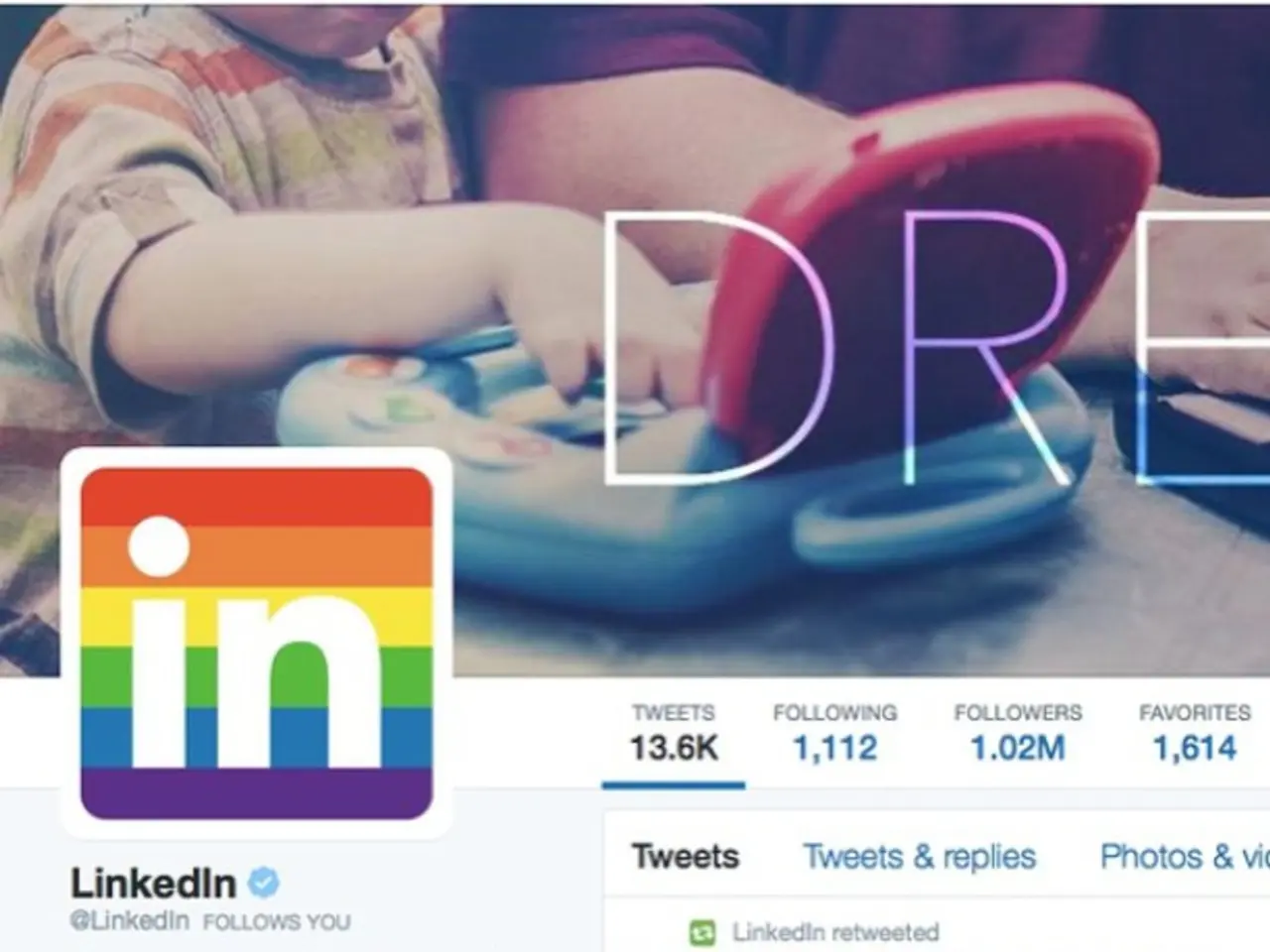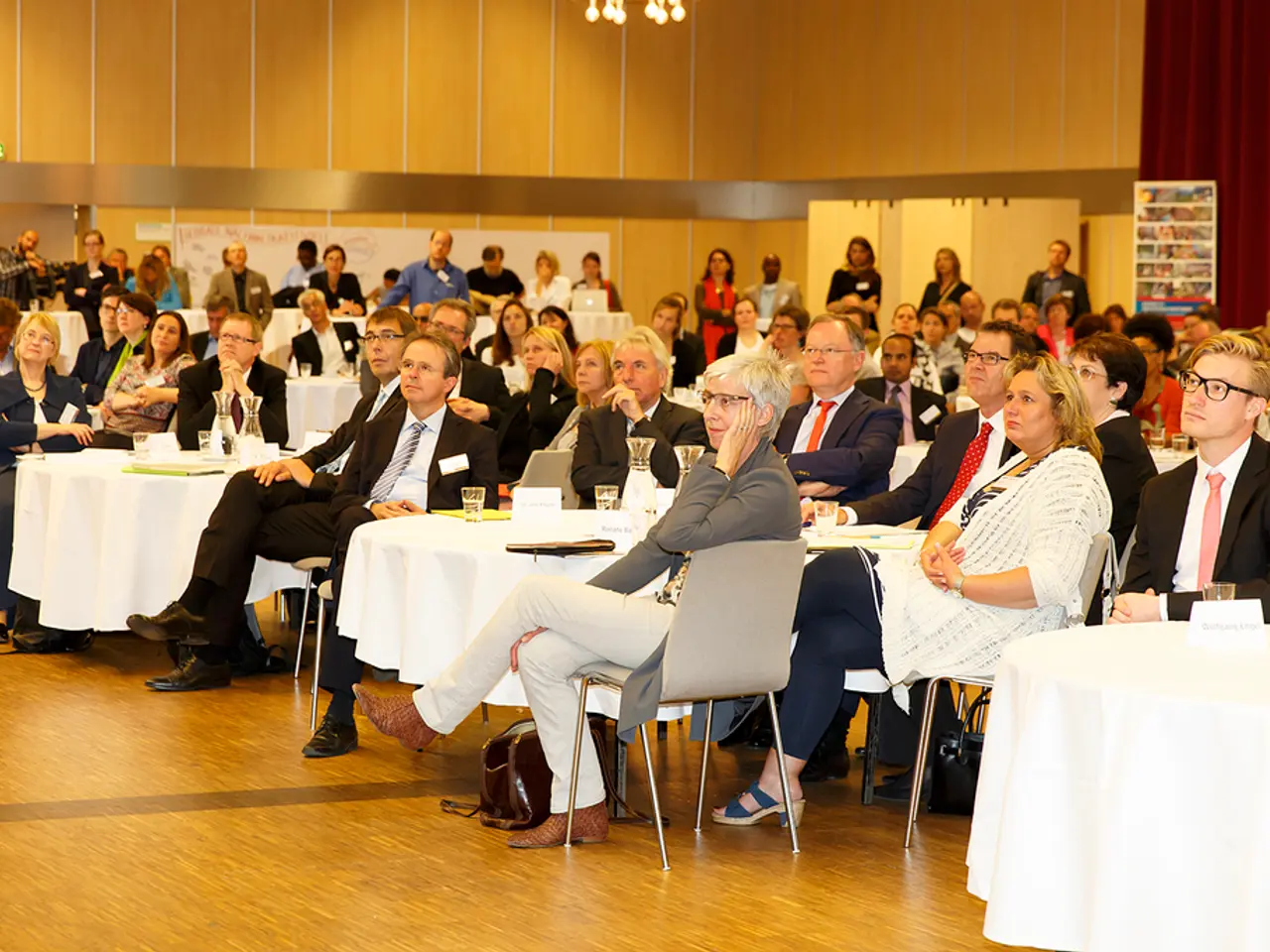Is scheduling LinkedIn posts detrimental to engagement levels?
In the world of content marketing, consistency and timeliness are key factors in driving engagement on platforms like LinkedIn. John Espirian, a seasoned content strategist, has seen the benefits of this firsthand, as he reported an increase in engagement after scheduling all his posts for a month in advance.
Scheduling posts can be a game-changer for content creators, offering the advantage of saving time and reducing stress. By batching content and scheduling it to go live at optimal times, when your audience is most active, you can maximise visibility and engagement.
A common misconception is that scheduled posts on LinkedIn are doomed to digital obscurity. However, multiple sources have debunked this myth, emphasising the benefits in engagement that can be achieved by using scheduling tools effectively.
Using LinkedIn's built-in scheduling tool or third-party tools like Buffer or Hootsuite does not negatively impact post engagement as long as API rules are followed. In fact, these tools can help you post consistently and at the optimal times, ensuring your content is seen by the maximum number of people.
Advanced scheduling features such as queuing content, best-time posting recommendations, and managing posting cadence can significantly reduce manual effort and energy, further enhancing engagement outcomes.
Engagement quality matters too. Meaningful comments and interactions boost algorithmic recommendation, and scheduled posts can maintain steady engagement if accompanied by active interaction like commenting on others' posts.
It's worth noting that a gap of 12 hours between posts is suggested to ensure each post has breathing room. Posting mid-morning on weekdays is advised as it is when the scrolling activity is high.
Engaging with the post immediately after it goes live is beneficial for increasing reach. Posting 3 to 5 times per week is recommended for maintaining visibility without overwhelming followers. LinkedIn's native scheduler is suitable for posts that include polls, tags, or documents.
Manual posting is ideal for sharing information immediately. However, for those who want to maintain a consistent presence even outside business hours, scheduling tools can be a valuable asset.
In summary, evidence indicates that proper use of LinkedIn's scheduling tools supports or enhances engagement rather than undermining it. By scheduling posts thoughtfully, content creators can ensure their content is seen by the right audience at the right time, leading to increased engagement and a stronger online presence.
[1] HubSpot. (2021). The Ultimate Guide to LinkedIn Posting: Tips and Best Practices. [online] Available at: https://blog.hubspot.com/marketing/linkedin-posting-tips
[2] Hootsuite. (2021). How to Use LinkedIn for Business in 2021. [online] Available at: https://blog.hootsuite.com/linkedin-business-strategy/
[3] Sprout Social. (2021). LinkedIn Best Practices: How to Optimize Your Content Strategy. [online] Available at: https://sproutsocial.com/insights/linkedin-best-practices/
[4] Social Media Today. (2021). The Best Times to Post on LinkedIn in 2021. [online] Available at: https://www.socialmediatoday.com/social-business/best-times-post-linkedin-2021/3713528/
Scheduling posts can help maximize visibility and engagement as it allows content creators to post consistently and at optimal times when their audience is most active, thereby increasing chances of engagement. Efficient scheduling tools like Buffer, Hootsuite, and LinkedIn's own scheduler have shown benefits in engagement, as long as API rules are followed. Effective use of these tools can aid in maintaining steady engagement through meaningful comments and interactions.
Moreover, leveraging features such as queuing content, best-time posting recommendations, and managing posting cadence can greatly reduce manual effort, further enhancing engagement outcomes. Engaging with the post immediately after it goes live can also contribute to increased reach, as suggested in various studies and guides found at HubSpot, Hootsuite, Sprout Social, and Social Media Today.
Finally, a balanced posting schedule that includes 3 to 5 posts per week, with a gap of 12 hours between posts, and posting mid-morning on weekdays when scrolling activity is high, can lead to a stronger online presence and increased engagement on LinkedIn.




